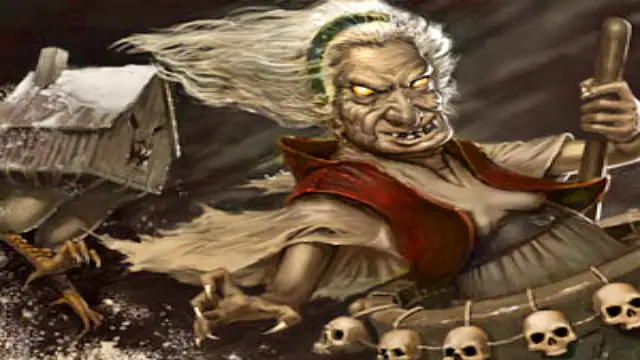In Slavic folklore, Baba Yaga is a fascinating figure. She is often seen as a supernatural being with a fierce appearance. Many stories describe her as a deformed old woman, which adds to her mysterious nature.
Baba Yaga is known for her unique mode of travel. She flies around in a mortar, using a pestle as her steering tool. This unusual image makes her stand out in folklore. She lives deep in the forest in a hut that is quite strange. This hut is often described as standing on chicken legs, allowing it to move around.
Baba Yaga is not just a scary figure; she can be both helpful and harmful. Those who seek her out may find her assistance or face her wrath. This duality makes her character intriguing. Sometimes, she takes on a maternal role, showing care for those in need. Other times, she can be a villain, creating challenges for heroes in the stories.
According to Vladimir Propp, a famous scholar of folklore, Baba Yaga often fits into specific roles. He categorized her as either a donor or a villain. However, she can also be ambiguous, making her unpredictable. This complexity adds depth to her character and keeps audiences engaged.
Baba Yaga’s Role in Folktales
In many folktales, Baba Yaga serves as a test for the main character. When someone encounters her, they must prove their worth. If they succeed, she may offer guidance or magical gifts. If they fail, they might face dire consequences. This aspect of her character emphasizes the importance of bravery and cleverness in Slavic stories.
Baba Yaga is also closely linked to nature. She has strong ties to forest wildlife and the natural world. In some tales, she is seen as a guardian of the forest, protecting its secrets. This connection to nature highlights the respect that Slavic cultures have for the environment.
Cultural Impact of Baba Yaga
Baba Yaga has left a significant mark on popular culture. She appears in various forms of media, including books, movies, and video games. Her character has inspired countless adaptations, showcasing her enduring appeal. For example, in the animated film “The Witcher: Nightmare of the Wolf,” she is portrayed as a powerful and enigmatic figure.
Moreover, Baba Yaga’s influence extends beyond entertainment. She represents the complexities of femininity and power. Many modern interpretations explore her character as a symbol of female strength and independence. This shift in perspective allows audiences to see her in a new light.
Conclusion
Baba Yaga is a captivating figure in Slavic folklore. Her dual nature as both helper and hindrance makes her stories rich and engaging. With her unique traits, such as flying in a mortar and living in a hut on chicken legs, she captures the imagination of many.
As we explore her character, we uncover themes of bravery, nature, and the complexities of femininity. Baba Yaga continues to inspire and intrigue, proving that folklore can evolve while still holding onto its roots.

